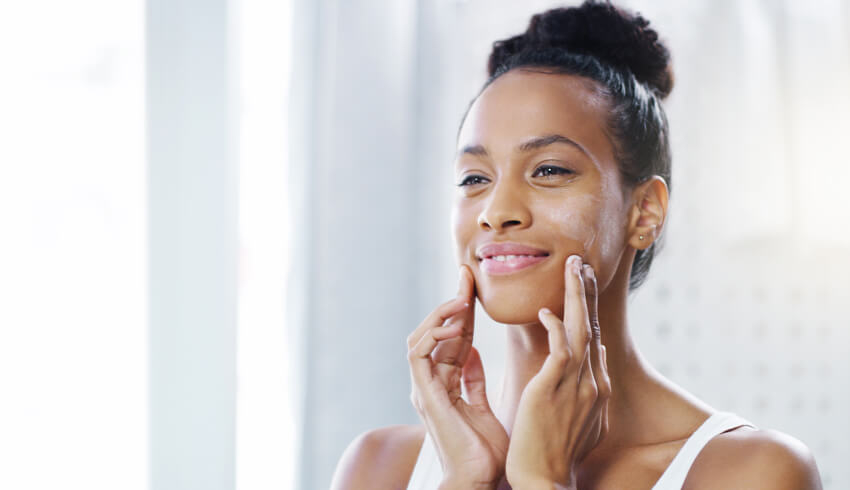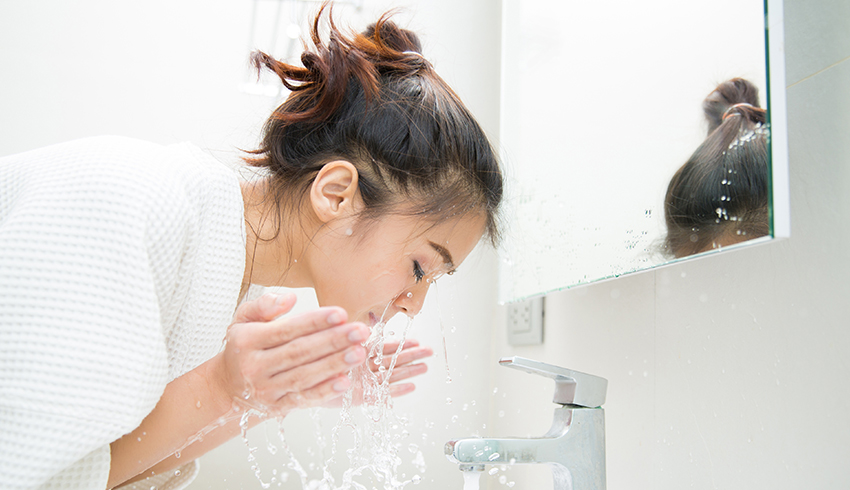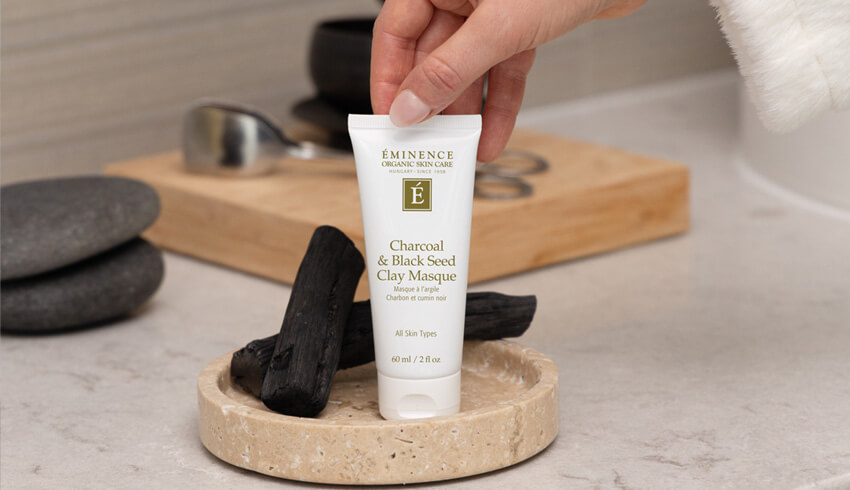
"Slugging" has been around for years (and may even be something your mom still does), but it recently exploded on TikTok thanks to K-Beauty. With almost 280 million mentions of slugging on TikTok, it may be the internet’s favorite viral skin care hack, but is this much-loved treatment for everyone? Let’s investigate the slugging skin care trend together.
What Is Slugging?
Slugging involves coating your face in a petrolatum-based product like Aquaphor, or Vaseline or, for a ‘cleaner’ alternative, a thick (petrolatum-free) mask such as our Kombucha Microbiome Leave-On Masque, before going to sleep.
The rationale for slugging is that the balm (in skin care terms: an occlusive) acts as a physical barrier, sitting on top of your nighttime skin care routine, sealing in any hydration and preventing moisture loss.
According to the Mayo Clinic, lipid balms like petroleum jelly, act like a greenhouse and insulate the skin “so that it doesn't lose heat and doesn't lose moisture." Any hydration you’ve applied during your skin care routine will be fully absorbed into the skin rather than evaporating overnight.
Slugging also supports the skin’s moisture barrier. Increased hydration means your skin is better prepared to defend against irritations or allergens that can cause blocked pores or breakouts. A healthy barrier also means faster recovery from any breakouts that do occur.
Slugging is not something we recommend to everyone. It’s a great step for those with a dry skin type and dehydrated skin. However, for those who are more breakout prone or have an oily skin type, we would suggest the occasional slugging treatment (every couple of months if needed) or not at all, as slugging may increase breakouts for oily skin types.
Slugging isn’t a miracle treatment for everyone. The AAD recommends avoiding petroleum jelly or thick occlusives if you’re prone to acne or breakouts. Although petroleum jelly is non-comedogenic, such a thick layer can trap dead skin cells and dirt, the perfect conditions for breakouts.
While those with dry skin may love the slightly oily residue that slugging can leave you with, oilier skin types may want to avoid trapping any extra oil. If your skin is acne prone or on the oilier side, consider an alternative to slugging. Layering a hyaluronic acid-based serum with a thicker face mask is a hydrating option that won’t clog your pores.
Although the name slugging is new — the practice is not. Korean, Afro-Caribbean and European beauty practices have used variations of skin slugging for generations — slugging the skin on the face, hands, feet, eyelids and lips to reduce dryness and encourage product absorption. It’s also common to see the practice applied by professionals after micro-needling or chemical peel treatments, or as a relieving salve for those with eczema or psoriasis.
Results From Slugging
After a nighttime routine of slugging your skin, you should wake up with healthy, smooth-looking skin that has been hydrated through the night and is less likely to wrinkle or develop fine lines. The process works to prevent transepidermal water loss, to keep moisture in your skin and enhance the effects of the skin care products you’ve applied to your face.
Who Should Do Slugging & How Often?
Slugging is best for drier skin types, mature skin, or those who feel dryness through the cooler seasons. The practice is especially beneficial though winter when temperatures drop and the skin barrier is compromised or at risk.
Each person should slug according to their preference of product thickness. Start with a cleansed face and follow as many steps of your skin care routine as you desire. Finish up by adding a few dabs of your slugging product and build up to a blueberry-sized amount. Apply once or twice a week (or even daily) depending on how dry your skin feels and how your skin reacts. But, always patch test before applying to the whole face. We have a more thorough routine explanation in this In The Mix video below.
Now, let's move on to a slugging routine (wait for the final step for the slugging part!).
How To Slug: Sleep Hydration Focused Nighttime Routine
Start about 30 mins before heading to bed.
1. Cleanse your skin. Gently cleanse with the Firm Skin Acai Cleanser, an ultra-hydrating way to remove impurities from the skin.
2. Exfoliate for extra smoothness. The Strawberry Rhubarb Dermafoliant contains plant extracts to smooth the appearance of the skin without stripping any moisture.
3. Hydrate with a spritz. Enjoy a few spritzes of our Neroli Age Corrective Hydrating Mist for a refreshing lift.
4. Treat with a serum or essence. We love the Birch Water Purifying Essence for a boost of hydration, or consider applying our Strawberry Rhubarb Hyaluronic Serum for extra moisture – or, try both!
5. Apply a moisturizer. The lightweight hydration in our Strawberry Rhubarb Hyaluronic Hydrator is a perfect boost of hyaluronic acid.
6. Apply a face oil. We love the Camellia Glow Solid Face Oil — warm up a small dab in your palm and smooth over the entire face.
7. Time to slug! Take a blueberry-sized amount of the Kombucha Microbiome Leave-On Masque, melting it first in your hands, and evenly rolling it over the face. Containing shea butter and beeswax, the balm will act as a coating to lock in hydration and prevent moisture evaporation from the skin. Leave the product on while you sleep.
8. In the morning, use your cleanser to remove any morning-after residue, or simply rinse the face with water to start with a clean base for the day ahead.
My Experience
As someone with year-round dry skin who really feels the dry air through the cooler months, slugging played a big role in my skin care routine this winter, and I happily jumped on the trend. Every second night, I applied my serum, moisturizer and facial oil before smoothing out a blueberry-sized bit of Kombucha Microbiome Leave-On Masque across my nose, forehead and cheeks.
I cruised through winter with glowy, moisturized skin — which I preferred over the dry, flakey and sometimes peeling winter skin I'm used to experiencing. As the weather gets warmer though, the need to slug has reduced, and I’m now slugging once or twice a week max
Product Picks
Other Considerations
1. Potential For Pillow Staining
If you sleep with a silk pillow case, consider switching back to your cotton pillow case on a slugging night, or sleep with a soft towel over your pillow.
2. Strategize Your Skin Care Routine
Adding slugging into your routine may require some planning as you will want to avoid using any actives, such as AHAs or BHAs, or retinoids on a slugging night. Due to the glasshouse effect we mention above, sealing in products intensifies the effects of some skin care products, especially chemical exfoliants. However, layering gentle moisturizers or hydrating serums while slugging is fine.
3. Cleansing Beforehand Is A Must
Removing makeup and dirt is an essential step before you start layering and sealing — you don’t want to trap any debris or nasties that you accumulated throughout the day.
4. Hair Up!
Unless tomorrow is hair wash day, we’d recommend tying up long hair and pinning back your fringe to avoid waking up with oily hair stuck on your face.
Have you tried slugging or do you swear by another viral trend? We would love to hear about it! Let us know on our social media, or in the comments below.






